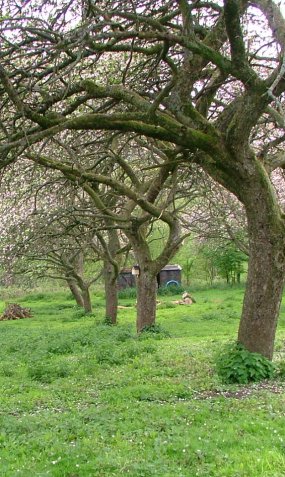
|
|
|||||||||||
|
|
Apple Trees are grown on a number of root stocks which determine the eventual size of the tree. These are the most common:
|
||||||||||
|
"Traditional fruit orchards are vanishing from England's landscape - with serious consequences for wildlife, conservationists have warned." BBC Website April 2009. They provide a good habitat for wildlife because they are subject to low intensity management, with few or no chemicals used, and the trees are allowed to reach a stage where they are hollowed and gnarled. |
|||||||||||
![]() Traditional orchards are characterised by widely spaced standard fruit trees,
with stocking density normally less than 150 trees per hectare (ie roughly at
least 30 foot spacing).
Traditional orchards are characterised by widely spaced standard fruit trees,
with stocking density normally less than 150 trees per hectare (ie roughly at
least 30 foot spacing).
![]() The National Trust estimates that 60% of these wild life rich habitats, once so
common have been lost since the last war. Those that remain offer a valuable
refuge for endangered animals, birds, insects & plants, if actively and
sympathetically managed.
The National Trust estimates that 60% of these wild life rich habitats, once so
common have been lost since the last war. Those that remain offer a valuable
refuge for endangered animals, birds, insects & plants, if actively and
sympathetically managed.
![]() Standard trees will last between 80 and 100 years. This is why some of ours are now dying.
Standard trees will last between 80 and 100 years. This is why some of ours are now dying.
![]() No, although very heavy clumps can burden the tree in strong winds.
The Severn Vale is a stronghold of this ancient plant which provides food for birds.
No, although very heavy clumps can burden the tree in strong winds.
The Severn Vale is a stronghold of this ancient plant which provides food for birds.

 The trees on this page are Bramleys on M25 rootstocks.
The trees on this page are Bramleys on M25 rootstocks.